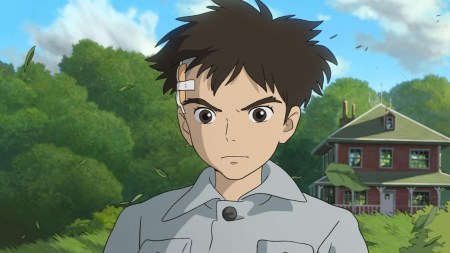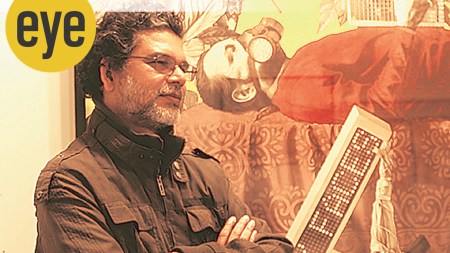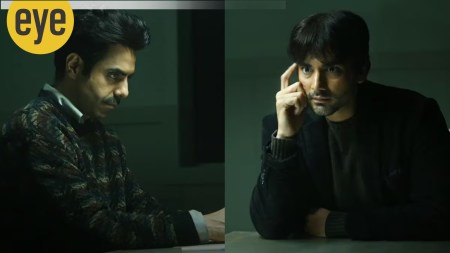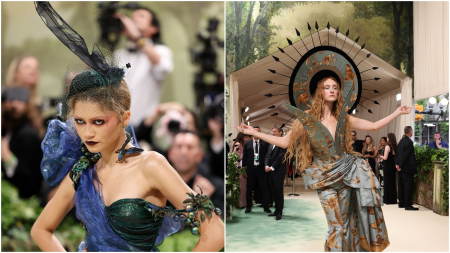- India
- International
‘False Clouds and Real Deluges’: Professor Atul Bhalla is on a mission to map climate change through art
Throughout the project, the teams will go on expeditions across the country and the world including Nepal to monitor the weather changes.
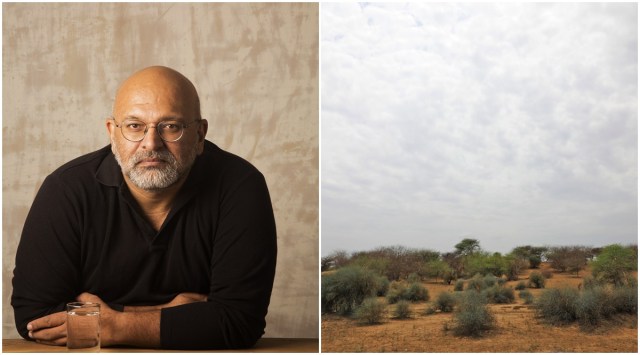 Prof Atul Bhalla says art also helps one "look at the future and how it may kind of unfold" (Source: PR Handout)
Prof Atul Bhalla says art also helps one "look at the future and how it may kind of unfold" (Source: PR Handout)The most significant conversations many people have in a day, almost always, include a discussion about the weather. But, its significance may be limited to how one is feeling on the day — warm, chilly, or humid. So is not the case with professor Atul Bhalla, a conceptual artist, who has delved deeper into the state of the atmosphere to look beyond day-specific phenomena.
Thus, started the journey to map the history of weather from locations around the world through the imaginary line of 28N Parallel that divides the global North and South, as part of a new project from Khoj (an international artists association based in Delhi) initiated alongside World Weather Network, Artangel.
 Atul Bhalla on whether climate change can be mapped and portrayed through artistic and experiential documentation (Source: PR Handout)
Atul Bhalla on whether climate change can be mapped and portrayed through artistic and experiential documentation (Source: PR Handout)
“It’s interesting that weather knows no national boundaries, just like the air and pollution, and the birds and the animals. Yet we are all affected, no matter how many boundaries we may draw out in the world in terms of country, region, and state. But whatever we do in one state or region, or one area affects everybody else. So it was definitely up my alley to take up this challenge of investigating the weather’s history,” the professor, who is also HOD (head of department), Department of Art and Performing Arts at Shiv Nadar University, Delhi NCR, told indianexpress.com.
Buy Now | Our best subscription plan now has a special price
Titled ‘False Clouds and Real Deluges’, the year-long initiative that began on June 21, 2022 at the exact summer solstice time of 2.43 pm features a collective of photographs, videos and sound footage of locations around the 28N Parallel to map the impact of climate change. The project is also bringing together a coalition of art organisations, environmentalists and communities in over 30 countries to use a multiplicity of forms. “Given the extremes of weather, the public has to be made aware of how each one of us can contribute to keep the planet how it is, and to also resurrect number of areas — whether they are forest, national parks, or a city’s green cover,” said prof. Bhalla, who reported the weather from Ranjit Pura village in Gujarat located at the border with Pakistan on June 21.

Throughout the course of the project, various teams will go on expeditions across the country and the world, including Nepal to monitor the weather changes. “I have given the proposal for us to be at the extreme locations in India on the summer and winter solstice. Gokal Pur, next to the Nepal border on the 28 Parallel, is a strategic location for us to map,” mentioned Bhalla while sharing that the project will culminate in June 2023 with an installation in Delhi comprising video, audio footage, and weather reports. Since Bhalla’s interest lies in “water as a repository of history, meaning and myth”, this project too will involve looking at water bodies near the 28N Parallel.
View this post on Instagram
There might be wells, lakes or such water bodies that may or may not have dried up. Like there is a baori (well) right behind the ancient historical town of Neemrana in Rajasthan that falls on the 28N Parallel. “Now the baori is dry but its existence proves that it was functional at some point of time. So, can we recharge such wells?” he questioned.
How can art as a medium help depict and document weather changes? The press statement noted that the project lays bare the stark realities of climate change across 28N Parallel with Prof Bhalla’s emphasis on interdisciplinary research and experiential learning within arts.
 Most of my work is centers around water as a repository of history, meaning and myth, said Prof Atul Bhalla (Source: PR Handout)
Most of my work is centers around water as a repository of history, meaning and myth, said Prof Atul Bhalla (Source: PR Handout)
“The deep interdependence between art and environment is accentuated by the inspiration nature provides to artists and the role art plays to spur awareness and ecological activism. Prof. Bhalla is playing a key role to catalyse this discourse partnering with the World Weather Network and 30 other artists, filmmakers, writers, performers at different locations around the world,” it read.
Prof Bhalla mentioned that art also helps one “look at the future and how it may kind of unfold”. “So, art including literature and film are important. I also refer to Amitav Ghosh’s book The Great Derangement: Climate Change and the Unthinkable, which addresses climate change in India, and all year all around the world. And it talks about how climate change will affect Indian cities on the coasts especially, he talks about Mumbai going underwater and back to the seven islands that it was originally was,” he described.
Can public art projects create deep awareness and thereby, be a call to action? “Within the gallery or without one, it is important to address the public. Art definitely disseminates a lot of imagination, information, and also about how we can actually change ourselves which is what this project also aims to do,” he said.
📣 For more lifestyle news, follow us on Instagram | Twitter | Facebook and don’t miss out on the latest updates!
May 13: Latest News
- 01
- 02
- 03
- 04
- 05



